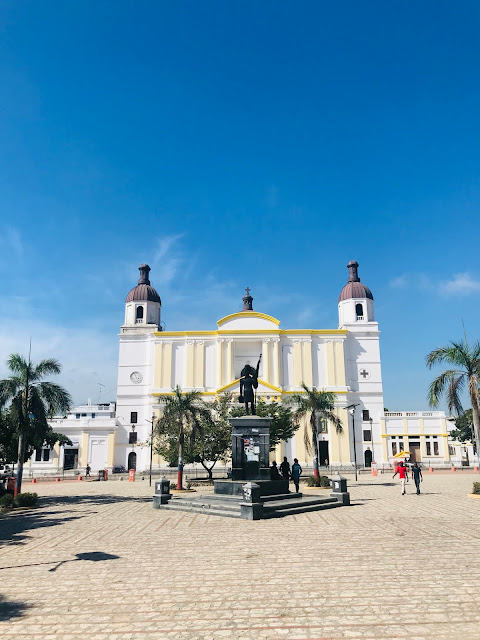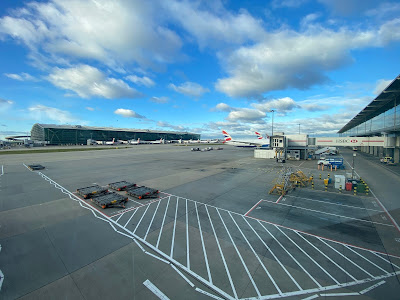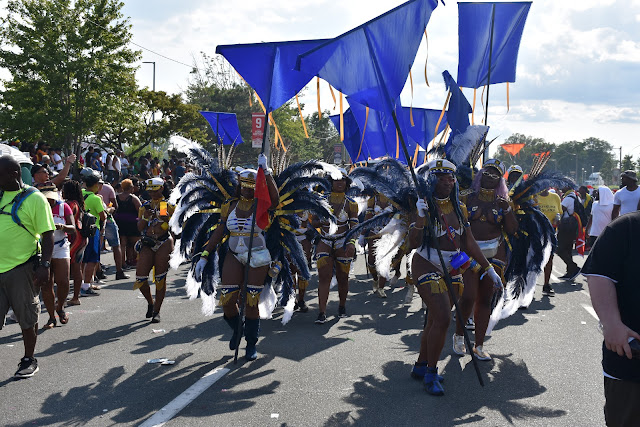Afroglobetrotter’s Haitian Adventure!
Capital: Port-au-Prince
Currency: Haitian Gourde (1 USD=95 Gourde in August 2019), the US dollar is widely accepted.
Official Languages: French, Haitian Creole
Known for: historical landmarks, The Haitian Revolution, Labadee beach, Haitian vodou.
My trip to Haiti had been in the works for a while so when it was time to get on the plane bound for Cap-Haitien, Haiti’s second city, I was excited but apprehensive as well. Travel advisories of the UK, US and Canada discourage all but essential travel to the country due to perceived “political instability and insecurity” but I was soon to find out, these concerns were probably (at least in Cap-Haitien) unfounded.
A bit of Haitian history...
 |
| A street in Cap-Haitien, Haiti. |
On the 1st of January 1804, following a 14-year brutal revolution (The Haitian Revolution) which saw the defeat and expulsion of French troops, this small island nation made history by declaring Independence from France and freedom for all its enslaved, making it the first black republic and the Haitian revolution was the only slave rebellion which resulted in the formation of an independent country. The revolution was not without consequences; over 200,000 Haitians were believed to have died and the new republic was ostracized because it posed a threat to nearby slave-holding colonies. From being one of the most prosperous Caribbean colonies, conflicts with neighbouring countries, foreign interference, violent successions and natural disasters have resulted in Haiti becoming one of the world’s poorest countries. In 1825, as part of a deal with France to recognise the country’s independence and to prevent an invasion, Haiti was made to pay an amount equivalent to over 20 billion US dollars in today’s money and this payment continued until 1947. It is disheartening that when the story of the abolition of the transatlantic slave trade is told, there is almost no mention of the role of the Haitian revolution despite it being one of the major decisive moments in the fight against slavery. For this reason, I decided to come to Haiti to learn more about this country and its proud people.
Cap-Haitien previously served as the capital of Haiti and was the birthplace of the Haitian revolution. Located on the North-East coast, the city of Cap Haitien is unique for its beautiful architecture, well laid out grid pattern and proximity to the imposing Citadelle Laferriere in Milot, which was a must-see for me on this trip.
Arrival
Cap-Haitien has a small international airport (Hugo Chavez International Airport, CAP) with a direct connection to Miami (via American Airlines) and other regional destinations including the capital, Port au Prince and The Bahamas.
Immigration:
Most nationals can visit Haiti visa-free but are required to pay a $10 (USD) tourist fee and fill out a customs declaration form on arrival. A part of this form will be detached and must be returned on exiting the country. The entire entry clearance process was smooth with no unnecessary delays and the officials were very professional.
I decided not to drive because the few rental cars available at the airport were very expensive and required massive deposits. With my rudimentary French, I was able to haggle with one of the taxi drivers to take me to my hotel for around USD 20 but I strongly recommend arranging airport transfers through your hotel.
The drive through Cap-Haitien from the airport takes one through a very busy market with chaotic traffic. Fortunately, there were traffic wardens at busy junctions keeping motorists in order. The hustle-and-bustle, motorcycles and tricycles made me feel like I was back in Lagos!
Where to stay
Most of the hotels and tourist-oriented accommodation in Cap-Haitien are located to the North of the city and there are a variety of options ranging from hostels to a recently built 4-star hotel conveniently sited on a hill with impressive views of the city and its bay. I thought the tourist industry might also be experiencing a boost as there were a few large hotels under construction.
I checked into my accommodation and decided that no travel advisory would stop me from seeing Cap-Haitien for myself. Armed with my phone’s navigation app, I headed into the streets towards the city centre determined to meet a few locals. Not long afterwards, I found a young man who could speak some English who reassured me that Cap-Haitien was safe and even showed me around the vicinity. I was quite intrigued to find that many young Haitians take keeping fit seriously as I saw a few young men and women jogging along the coast. Just a short walk down the road, I also found a small group of youngsters working out at an outdoor gym and another group playing football on the road. Contrary to what the outside world would make you believe, life was certainly going on as normal!
I had planned a lot of activities for my first full day in Cap-Haitien including the trip to Citadelle Laferriere. I arranged a taxi for the day through my hotel at a bargain and set out early in the morning. The drive to Milot took under an hour and the road was in a fairly good condition. Milot itself is a well developed town with well-paved roads and I spotted a large catholic hospital along the main road into the town. The National History Park in Milot is a UNESCO World heritage site which comprises two main tourist sites; Citadelle Lafarriere and the ruins of Sans-Souci Palace.
From the ticket office at the base of the hill directly in front of the imposing ruins of Sans-Souci Palace, you will find to the left of the entrance, the Lady of the Immaculate Conception Church, a round edifice with an impressive dome. It might be worth spending a few moments looking around the church before heading up to the Palace.
 |
| Main entrance of the National Historic Park |
From the ticket office at the base of the hill directly in front of the imposing ruins of Sans-Souci Palace, you will find to the left of the entrance, the Lady of the Immaculate Conception Church, a round edifice with an impressive dome. It might be worth spending a few moments looking around the church before heading up to the Palace.
 |
| Marble sculpture at Sans-Souci Palace |
 |
| The front view of Sans-Souci Palace |
Sans-Souci Palace was built under the instructions of Haiti’s self-proclaimed King Henri Christophe (Henri I) and at the time of completion, was one of the finest buildings in the Americas drawing comparisons with the Palace of Versailles in France. Following the death of Henri Christophe, the Palace was abandoned and subsequently destroyed by the great earthquake of 1842. The magnificence of the Palace is still obvious even with most of its roof and walls missing.
On exiting the palace, a cobbled, winding road leads up the hill to an imposing fortress called Citadelle Laferriere (Citadelle Henri), built as a military base to protect the country from invading troops.
Citadelle Laferriere (Citadelle Henri), completed in 1920 and built at a height of 910m, has been described as one of the finest pieces of military engineering of the 19th century and is the largest fortress in North America. From this viewpoint, one can see as far as the coast and together with the surrounding hills and valleys provided a significant deterrent to invading troops. In addition, the fortress has 365 cannons pointing in all directions. Many of these were seized from defeated armies and still bear the insignia of those countries. A complete tour of the Citadelle would need several hours as there is so much to see at this architectural masterpiece.
 |
| Entrance to the Citadelle |
A plaque at the entrance of the complex reads:
The Citadelle Henri is a living testimony to the determination of a people to consolidate his right to be alone and sovereign to decide his own destiny. You who step into this place of remembrance and reflection, symbol of dignity and freedom, may your conduct be an example of respect.
It is quite remarkable that unlike other similar fortresses in Africa and the Americas which were constructed to keep slaves in bondage, Citadelle Laferriere was built to keep out slave masters by a proud people who won back their freedom with sweat and blood. For that reason, I have eternal respect for the Haitian people.
Haitian vodou
I once mentioned to someone that I was looking forward to visiting Haiti and the first reaction was one of bewilderment as she was really scared of an encounter with “Haitian voodoo”. This inordinate fear by the West of Haitian vodou (an indigenous religion with origins in Africa) may stem from the Haitian Revolution. It was rumoured that the success of the revolution may have been due to the extra powers obtained through vodou! Well, from my experience, I know people tend to demonise things they do not understand rather than seeking to learn about them. That said, this “mysterious” practice of vodou attracts many tourists who come to Haiti to experience Voodoo shows specifically organised to thrill visitors.
 |
| Large butterfly in the "spooky" room |
Every year in July, there is a popular vodou festival which attracts visitors from around the world to the nearby town of Plaine-du-Nord. As I had just missed it, I wasn’t really expecting any voudou encounter on this trip but something mystical happened during my visit to the Citadelle which is worth sharing. During the tour, my guide showed me a small, dark room near the entrance to the building. While he was explaining that some local vodou followers come to perform certain rites in this room, we heard a weird sound (like something moving around). We both looked around for the source of the sound but found nothing but a huge, black butterfly on the wall which would not explain the sound. This spooked me a little but made me even more eager to learn about the practice of vodou. I am definitely coming back to see the Plain du Nord festival!
Labadee and other beaches around Cap-Haitien
The next stop on this trip was Labadee, a beach resort built by Royal Caribbean exclusively for cruise ship visitors but accessible to paying visitors. It is also home to the world’s longest zip-line over water. To my dismay, the facility was closed when I visited as no cruise ship was scheduled to arrive on that day. Nonetheless, I managed to catch a glimpse of the beautiful bay. Apart from the private beach, there are other equally beautiful beaches and islands nearby. There was the option of taking a short boat ride to a pristine island but due to time pressure, I opted for Cormier Plage which was only a short drive from Labadee. Cormier Plage was clean and maintained by a hotel (non-hotel guests can use the facilities or a small fee).
 |
| Labadee beach |
After my return to Cap-Haitien, I checked into another hotel (which was much better than the previous one) and with the confidence from the previous day’s solo adventure into the city, I walked through the streets all the way to the Cathedral. Again, from my experience, Cap Haitien appeared to be a peaceful city with everyone going about their normal business although the hustle and bustle can be intimidating to anyone who isn’t used to it. The real surprise came when I heard Nigerian afrobeat music blaring from a speaker in the market. Being a French speaking nation far removed from Africa, I was not expecting Nigerian Afrobeat to be popular here. For a moment, I wondered if they understood what “banana fall on you” meant in that song!
This trip to Haiti has deepened my respect and admiration for the people of this country who, over the last two centuries, have made significant sacrifices for the emancipation of the black race. Unlike many other places with significant African diaspora populations that I have been, Haitians see themselves as Africans and even recently applied for full membership of the African Union but had this request declined because it is not geographically part of the African continent, a reason that I find unacceptable!
Haiti faces huge challenges not least the devastating 2010 earthquake that destroyed much of the capital, Port-au-Prince (fortunately, Cap-Haitien was relatively spared). Public Infrastructure can be relatively poor in places but there is a lot to see and do, particularly in the Cap-Haitien area and in my opinion, Citadelle Laferriere should be a pilgrimage site for all peoples of African descent.
Haitians have endured violent conflicts, massacres and devastating natural disasters but like a Phoenix from the ashes, Haiti has always risen and I know that with the determination and resilience of its people, this country will rise again!
In the meantime, one thing is certain; this will definitely not be my last trip to Haiti!









Comments
Post a Comment